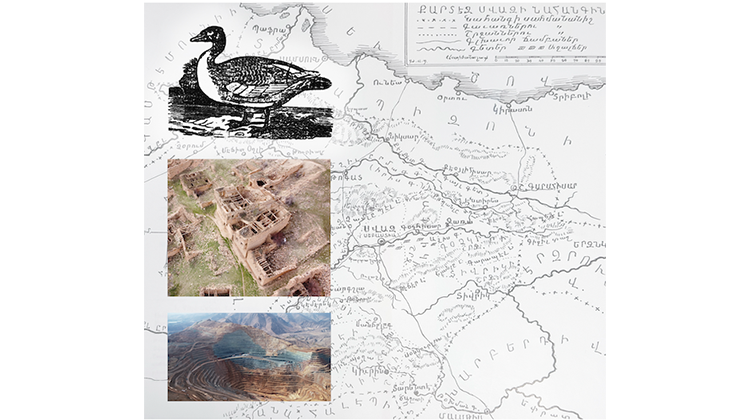AKPIA 2025 Spring Lecture Series: An Evening With: Aslihan Gunhan: Making and Unmaking Land: Architecture, Environment, and Dispossession In the Upper Euphrates

Aslıhan Günhan is an architect and architectural historian whose work explores the history of modernity in the late and post-Ottoman world through the lens of displacement. She is currently a postdoctoral fellow at AKPIA@MIT and an assistant professor of architectural history in the Department of Architecture at Bilkent University. She received her Ph.D. in the History of Architecture and Urban Development Program at Cornell University in 2023. Her first book project is an architectural history of the displacement of Armenians from the Ottoman Empire. It examines their silenced legacy in the built environment and the contested modernity in Turkey, which created a legal framework for property confiscation, dispossession of former citizens, and the bureaucratization of denial. Günhan’s research has been supported by institutions including the Getty Research Institute, SSRC IDRF, Fulbright Program, Andrew W. Mellon Foundation, Einaudi Center for European Studies, and SALT Research. Her work has appeared in edited volumes such as Art and Architecture of Migration and Discrimination (2023), and in peer-reviewed journals including Yıllık: Annual of Istanbul Studies (2023).
Abstract:
“Making and Unmaking Land” focuses on Eastern Anatolia, specifically the Armenian settlements along the Çaltı River Valley in the Upper Euphrates region, near the Sivas-Erzincan border. This talk investigates the territorial turn in the late Ottoman Empire, which enabled centralized state control while also shaping a land-based identity among the Armenian community. Structured around three episodes, it examines the history of dispossession by tracing how land was made and unmade through demographic and political shifts before and after the Armenian Genocide. In the absence of formal title deeds or architectural documentation, the talk assembles an unconventional archive by drawing on diverse sources—including state archives, patriarchal reports, journals by indigenous agriculturalists, fieldwork, plant samples, and drone imagery. Through this methodology, it offers new insights into the geographic, ecological, and architectural transformations that followed Armenian dispossession.


